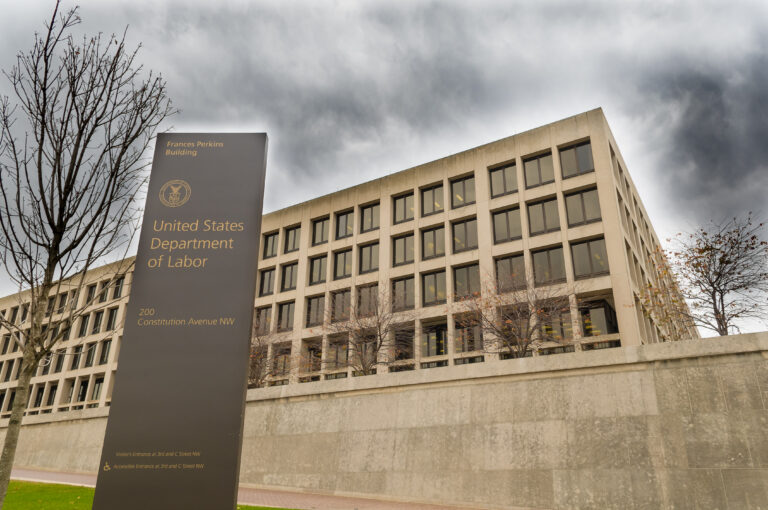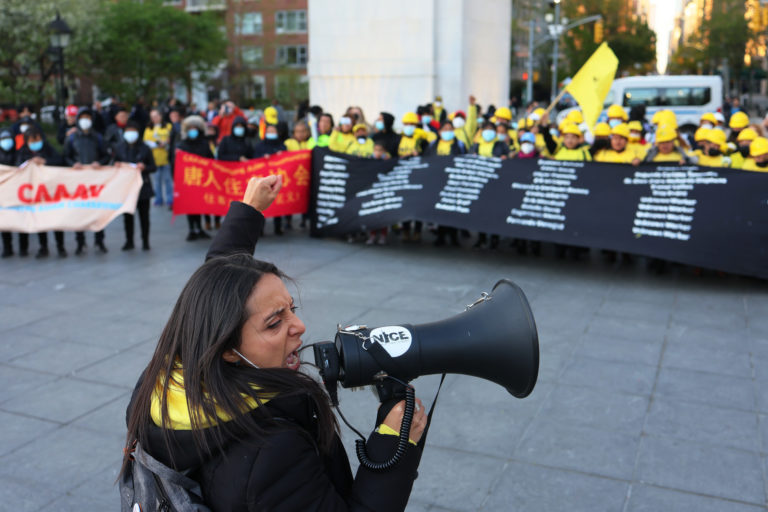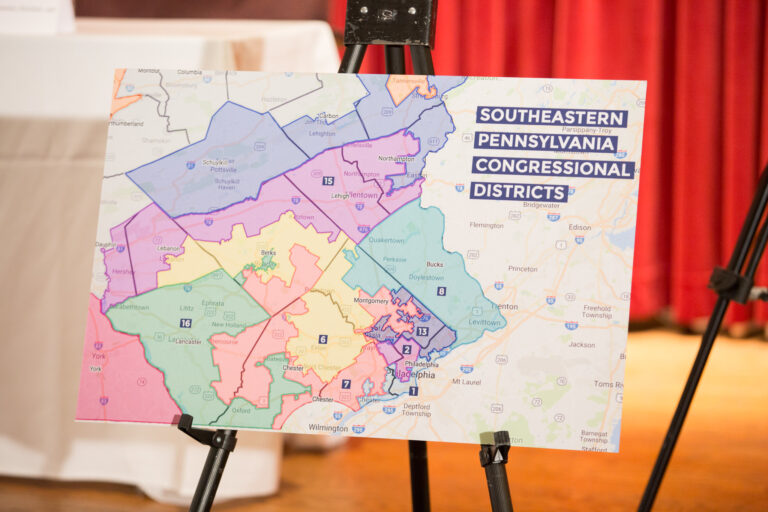
Marina Multhaup is a Senior Associate at Barnard, Iglitzin & Lavitt—a law firm in Seattle, Washington, that represents unions, and a former student member of the Labor and Employment Lab at Harvard Law.
On November 5th the Washington Supreme Court ruled, in a 5-4 decision, that dairy workers are eligible for overtime pay. The Martinez-Cuevas decision could apply to all agricultural workers in Washington state. Materially this will improve the wages of farmworkers at a crucial time—seven months into a global pandemic where farmworkers, deemed “essential,” have been forced to labor without protection, hazard pay, or collective representation. No longer being excluded from collecting overtime pay, in a dangerous job where they are often forced to labor overtime, is a win by any count. Below the top line of the material win is an interesting and potentially groundbreaking legal possibility that has plagued labor law since its inception.
The Washington Supreme Court majority ruled for the dairy workers only on their first count, that excluding them from the Washington Minimum Wage Act violated Washington’s privileges and immunities clause due to dairy farming’s dangerous nature. However, the concurrence, written by Justice Gonzalez, embraced the plaintiffs’ second legal argument: that the farmworker exclusion violates the equal protection clause because it was racially motivated. Justice Gonzalez’s concurrence offers a breath of legal hope for a national challenge to the FLSA’s exclusion of agricultural workers and to the exclusion of farmworkers and domestic workers from all New Deal legislation.
Justice Gonzalez wrote in his concurrence about the well-documented anti-Black motivations that animated the farmworker and domestic worker exclusions from New Deal legislation. He described how this initial exemption from national legal protection was exacerbated as state lawmakers subsequently adopted the FLSA—and its exemptions—as their own employment standards. Justice Gonzalez connected this racist history with the reality of farmworkers today: as a group they are among the poorest workers in the nation, almost three-quarter immigrant and overwhelmingly Spanish-speaking and/or Latinx, with shorter life expectancies, higher rates of sexual harassment, and victims of social and political exclusion. In this sense, he spoke of farmworkers as subjugated to “second-class worker status,” politically powerless, and a “central concern” of equal protection.
Indeed, the story of agricultural work in this country has always been and continues to be one of caste and capitalism. Capitalism, both in the United States and in Europe, was only ever able to be as profitable, fast-growing, and industrializing as it was because it relied on the enslaved labor of Black people in the U.S. South growing the cotton that fueled England’s factories. The desire to maintain that underclass of agricultural production was achieved partially through the agricultural exemption built into the New Deal legislation, which was intended to preserve the share-cropping plantation southern economy that still persisted in 1935, seventy-five years after the formal end of slavery. By understanding the situation of farmworkers today, explained in Justice Gonzalez’s concurrence, it is clear that little has fundamentally changed about the structure of the US economy. It still depends on the exploitation of a racialized group to perform agricultural labor for less than subsidence wages and benefits, which is partially enabled legally through the farmworker exclusions.
The hypocrisy between the ideals of the U.S. legal system and the realities it allows has always existed. The Martinez-Cuevas concurrence uses the promise of the equal protection clause to attack the reality of the farmworker exemption. Could this open to the door to a national challenge against the farmworker and domestic worker exemptions from New Deal legislation?
The potential legal argument is fairly straightforward, and is spelled out in much more detail by Professor Marc Linder at the University of Iowa Law School in his article, “Farm Workers and the Fair Labor Standards Act: Racial Discrimination in the New Deal.” Like any equal protection argument, a court would first need to identify the standard of review. For a facially neutral statute like the Fair Labor Standards Act, a court would usually apply a rational basis test. However, if the argument was founded on a claim of a racial discriminatory purpose, a court would apply the “impermissible purpose review” standard, under which proof of racial motivation would invalidate the statute. Most in the legal field are aware of the difficulties involved in proving discriminatory purpose, and the dismemberment that disparate impact litigation has been subject to in the courts. However, the farmworker exclusion remains a fairly strong potential target to an equal protection attack because substantial proof does exist of its racial motivations. And, the Supreme Court has said that in addition to legislative and administrative history, the “opinions of historians” as to the racial motivation of a statute may be accepted. Today there exist a plethora of articles, historians, and scholars who articulate the racial motivation of the farmworker exclusion from the FLSA.
There has never been a direct legal challenge to the FLSA’s farmworker exclusion based on an equal protection claim of racially motivated purpose. The two previous attempts to challenge the national farmworker exclusion were unsuccessful but did not preclude the type of legal challenge advocated here. First in Romero v. Hodgson, the issue of racial discrimination was not presented directly to the court as a basis for invalidating the farmworker exception. Secondly in Doe v. Hodgson racial discrimination was used only to argue that the current composition of farmworkers were mostly people of color, and thus the statute’s exemption disproportionately impacted racial minorities. The Doe plaintiffs did not pursue an argument of legislative racial motivation. As a result, both the Romero and Doe courts applied only rational basis level scrutiny and ruled against the farmworkers.
Potentially, the equal protection attack against worker exclusions based on racial motivations could be directed to multiple statutes and exceptions. Domestic workers were also excluded from the FLSA based on racial motivations, as most domestic workers were Black women. Domestic workers and farmworkers were excluded from all New Deal legislation, not just the FLSA, and similar attacks against their exclusions in the NLRA should also be explored. And, because many state wage and hour statutes were based on the FLSA, many states have incorporated the same exclusions which could also be challenged. These challenges would have to be strategic, both legally and politically. Legally, emphasis would have to be placed on the evidence of racial animus that motivated the exclusions and the need for courts to adopt a higher standard of review. Finding a sympathetic federal court system, perhaps the Ninth Circuit, would be key. Politically, advocates could highlight the historic anti-Black nature of the exclusions and the national racial reckoning that the country has had. Advocates could use the opportunity to connect the structural barriers that these workers face to other historically marginalized groups and make a political and moral argument about racial and economic equality.
At a time when the labor movement is facing both a resurgence of energy and also an increasingly conservative judiciary, attempts to open up labor’s laws to farmworkers and domestic workers could bring millions of workers into the labor movement and begin to end the “second-class status” of these workers. As Justice Gonzalez concluded, “excluding farmworkers from health and safety protections cannot be justified by an assertion that the agricultural industry, and our society’s general welfare, depends on a caste system that is repugnant to our nation’s best self.”
This is a follow up to Marina’s previous post about Martinez-Cuevas.










Daily News & Commentary
Start your day with our roundup of the latest labor developments. See all
December 19
Labor law professors file an amici curiae and the NLRB regains quorum.
December 18
New Jersey adopts disparate impact rules; Teamsters oppose railroad merger; court pauses more shutdown layoffs.
December 17
The TSA suspends a labor union representing 47,000 officers for a second time; the Trump administration seeks to recruit over 1,000 artificial intelligence experts to the federal workforce; and the New York Times reports on the tumultuous changes that U.S. labor relations has seen over the past year.
December 16
Second Circuit affirms dismissal of former collegiate athletes’ antitrust suit; UPS will invest $120 million in truck-unloading robots; Sharon Block argues there are reasons for optimism about labor’s future.
December 15
Advocating a private right of action for the NLRA, 11th Circuit criticizes McDonnell Douglas, Congress considers amending WARN Act.
December 12
OH vetoes bill weakening child labor protections; UT repeals public-sector bargaining ban; SCOTUS takes up case on post-arbitration award jurisdiction